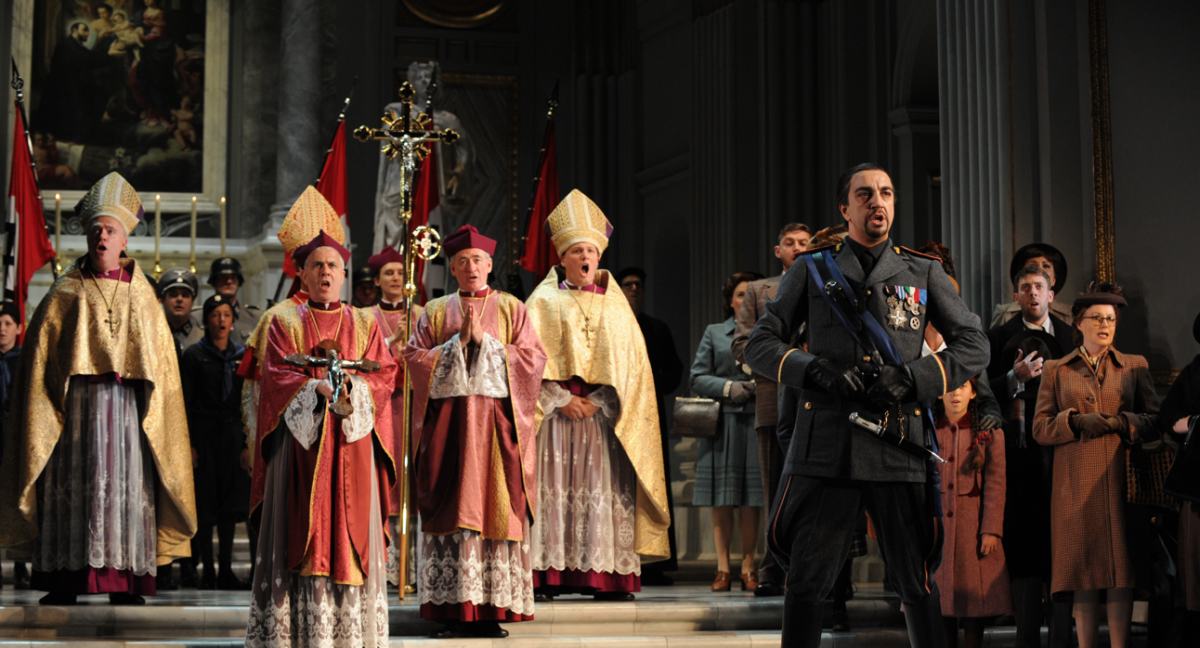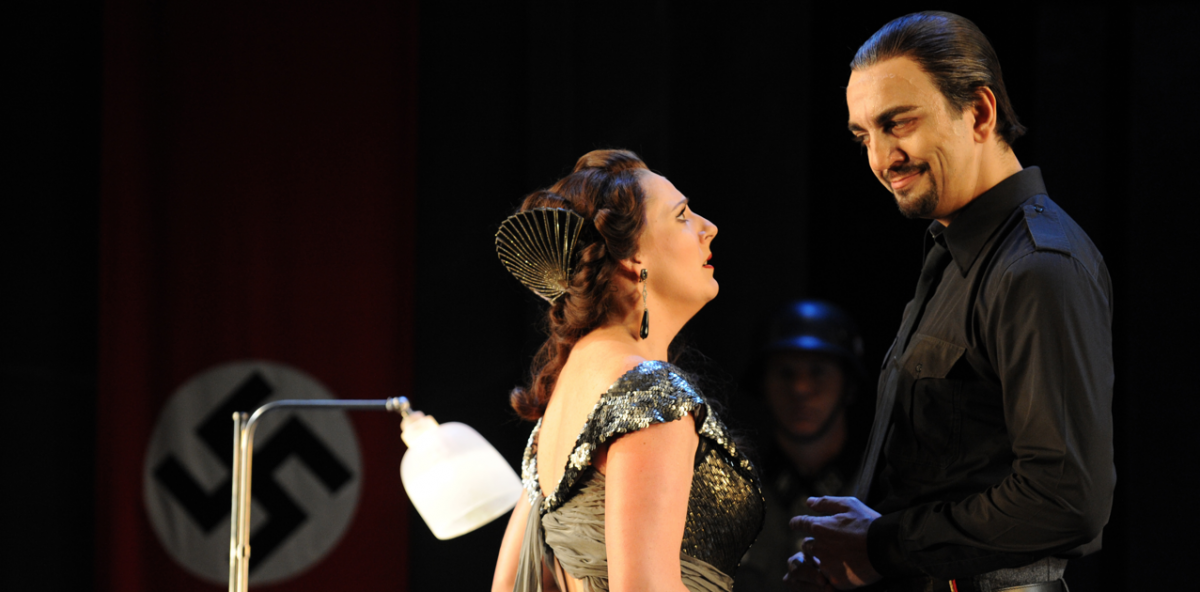John Bell’s shocking Nazi-infused Tosca gets a far from shabby revival.
Joan Sutherland Theatre, Sydney Opera House
January 13, 2015
This is the first revival for John Bell’s thoughtful, dramatically charged Tosca in Sydney and it’s fair to say it remains the jewel in Opera Australia’s current repertory crown. Bell’s homework on 1943 Nazi occupied Rome ensures that what can sometimes be too much of the oft-quoted “shabby little shocker” resonates with issues of freedom and tyranny that carry as much weight in today’s turbulent world as they ever did.

Michael Scott-Mitchell’s monumentally impressive sets (that breath-taking rendition of a Baroque chapel still thrills), exquisitely lit by the ever-inventive Nick Schlieper, plus some finely detailed costumes care of Teresa Negroponte make for compelling viewing. But it’s Bell’s telling staging that turns a blood-and-heaving-bosoms melodrama into a piece of theatre as smart as anything on show in Sydney this month. Three priests cross the back of the stage, so absorbed in the newspapers that they almost forget to genuflect; a procession of ‘furs’ into church for the Te Deum shows the powerful contrast between church, society and state; the juxtaposition of swastika and crucifix; the ‘shepherd boy’ who turns out to be a young Jew in transit to the camps – all are grist to Bell’s potently dramatic mill.
As the eponymous heroine, South African soprano Amanda Echalaz shows why she’s in demand from the Met to Covent Garden (I remember her scorching turn as a flesh-eating harpy in Birtwistle’s Minotaur). A passionate actress with a voice that’s full and even over Tosca’s considerable range, she compels attention despite competing with one of the tallest casts I can recall. Only on the top B’s and C’s does she occasionally feel a little fragile, and that only aids in projecting her vulnerability. Her almost obsessive religiosity comes over with a fierceness that contextualizes her well in 1940s Italy. The archness of the jealous diva in Act I takes some time to draw you in, but by the time Scarpia has his hands all over her you are rooting for her to find that fruit knife. Singing with fiery intelligence, her Vissi d’arte is heartbreaking and worth the price of the ticket alone. Her desperate demise packs more of a punch than I recall from my previous experience of the production.

Her Cavaradossi is the Italian Riccardo Massi. He makes a personable artist and credible lover though he’s a little low-key as a freedom fighter. Vocally he’s clean of tone and clear of diction with appealing, secure top notes. The voice itself sometimes feels placed a bit far back in the head and his light tenor is heard to best effect when sensitively underscored by the orchestra (he gets swamped at times in Act II). Nevertheless, he builds his performance well and E lucevan le stelle is his finest moment, sung with perfect control of line and plenty of emotional engagement (a lovely clarinet solo here as well!) In duet, too, he’s excellent, matching his more ample vocal partner – their final vow of love and freedom rings true as a die.
Claudio Sgura (a fine Iago in last year’s Otello) makes a magnificently dark Scarpia, singing with subtlety, volume, and well-centered, black-as-pitch tone. His interpretation could do with a little refinement – he sometimes plays the sinister card too hard with a permanent scowl and a tendency to affect the sideways glance with eyebrows raised – but he plays the gallant well to inflame Tosca’s jealousy in Act I and the villainy does come into its own in Act II where his scenes with Ecahlaz are the opera’s absolute highpoint.
In Act I, David Parkin makes an excellent Angelotti, singing with resonant tone and plenty of passion while Luke Gabbedy puts in another nice (and refreshingly well sung) cameo as a snuffling anorak of a Sacristan. Adrian Tamburini stands out again in Act II as a beautifully sung and subtly acted Sciarrone while Benjamin Rasheed’s Spoletta is deeply creepy, if a little hoarse of tone. Dominic Grimshaw is a natural delight as the ‘shepherd boy’. And a special word of mention for the sinister card-playing officer in Act II whose focus never wavers but who tells us more about the politics of Scarpia’s coterie with a tiny move of hand or eye than actual lines ever can. The OA chorus is superb – the boys’ chorus too – singing a hair-raising Te Deum and for once making me actually listen to the offstage cantata in Act II.
The Italian conductor Andrea Battistoni is in the pit, drawing a sensitive reading from the Australian Opera and Ballet Orchestra that revels in Puccini’s emotional ebb and flow. His ardent encouragement pays dividends, digging deep into the orchestration to explore many special moments, but I’d definitely mention the lovely chamber passage for strings before the tenor’s Act III aria, which has never sounded more poignant. For me, the only foot he put wrong on opening night was in a rather rushed playout to Act I.
A first rate revival, then, packed with dramatic fireworks and vocal pleasures. Betray your family to the Nazis for a ticket…
Tosca is at Sydney Opera House until March 17 with cast changes through February.












Comments
Log in to join the conversation.